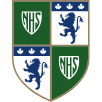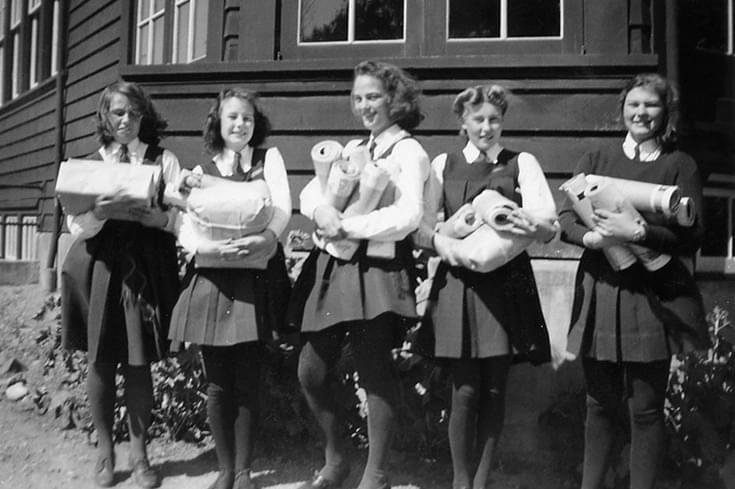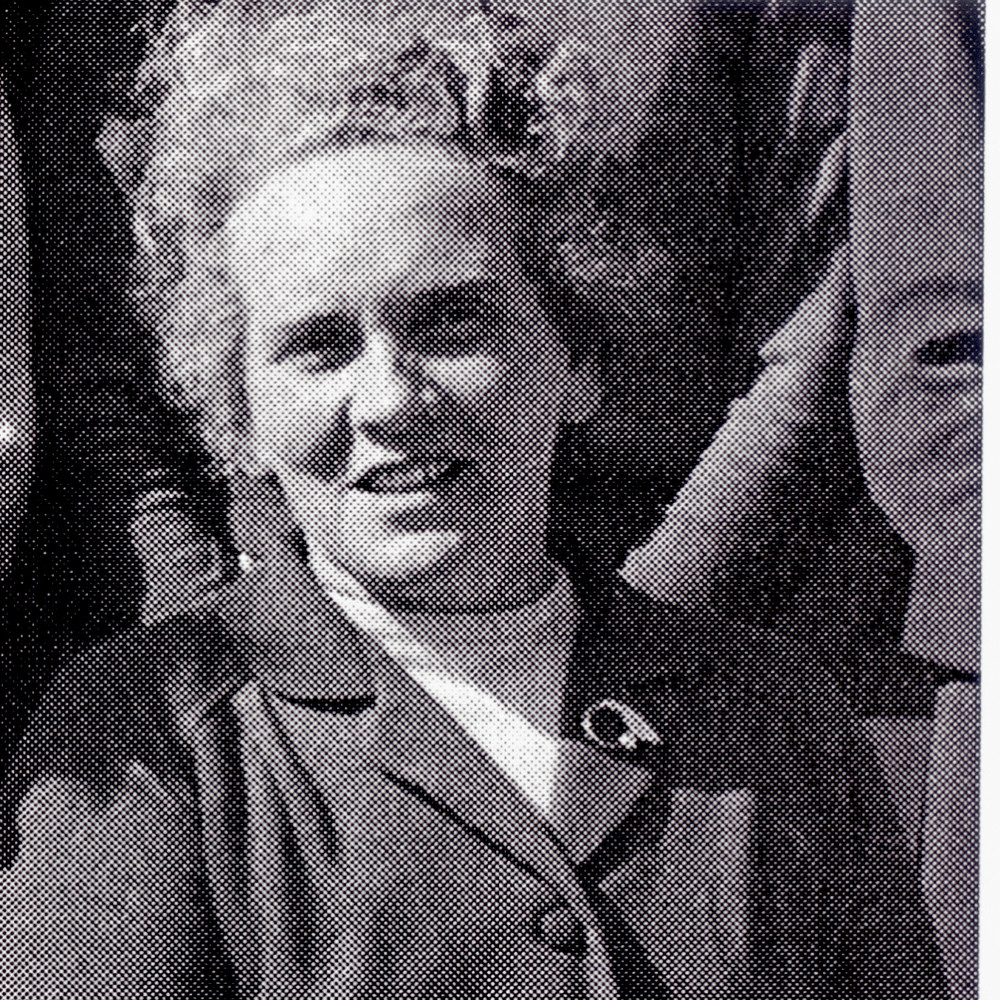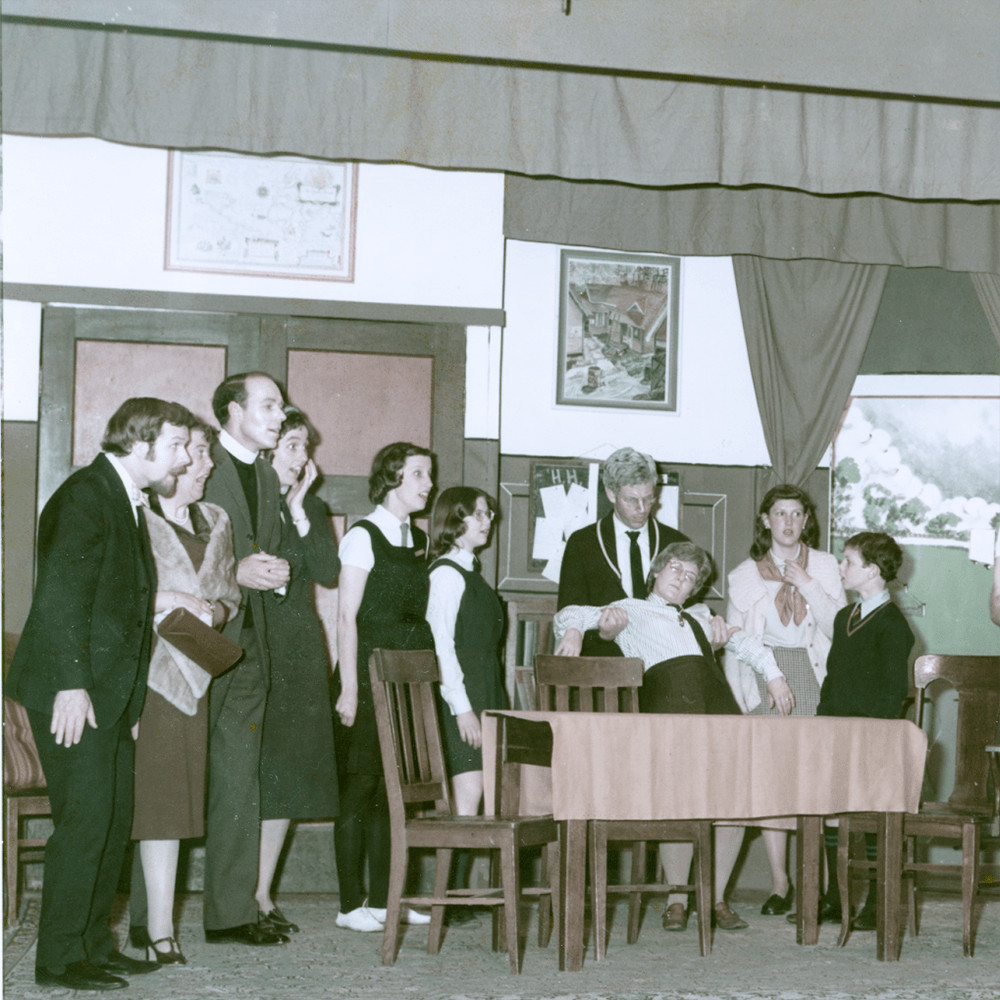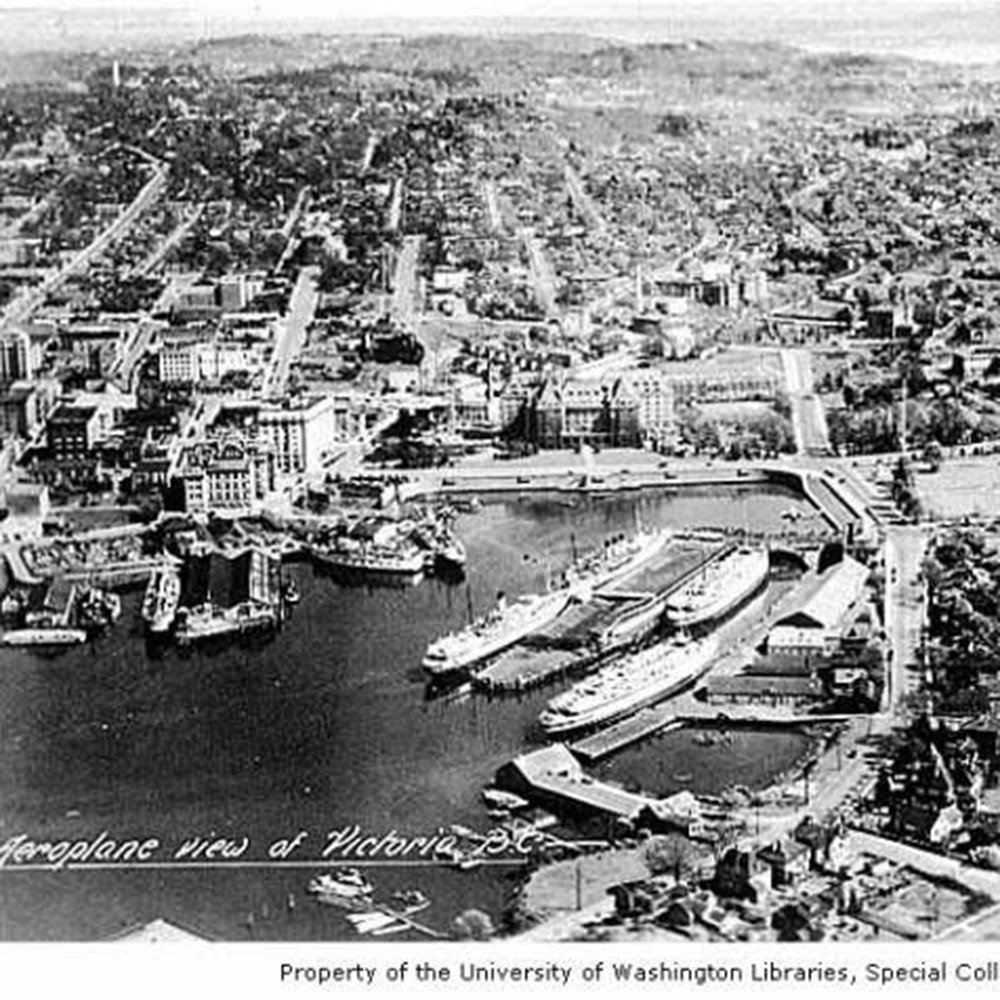In 1940, as the invasion of Britain appeared inevitable, NHS took in at least 10 of the thousands of young evacuees escaping the threat with more arriving from Britain, China and Hong Kong over the next two years. Headmistress Miss Dora Atkins considered their presence in her school part of her contribution to the war effort. Some lived with foster families, others in the boarding house.
During that first year of WWII, Glenlyon received only six applications for evacuees from the UK but by the end of that year, Holland and Belgium were overrun by German forces, France capitulated and British and French forces were evacuated from Dunkirk. Consequently, headmaster Major Ian Simpson received sixteen registrations from England and accepted them all. Another seven boys came from the Far East during 1941 and 1942. The US Pacific Northwest was a further area for a few admissions.
Of course, accepting evacuees was not the only contribution made by NHS. The girls began to raise money to aid the war effort. At first, they supported the Red Cross, preparing ‘Bombed Out Kits’ to be sent to Britain, but soon came up with other targets as recipients of their generosity. The Fifth Form collected stamps to send to England for resale to buy cots for the Children’s Hospitals. By far the most effective plan was the adoption in 1942 of the corvette HMCS Restigouche. Spearheaded by prefect Rosemary James, various fundraising activities were organised to pay for wool and postage which allowed for seven large parcels of knitted articles, 20 pounds of candy, many bundles of magazines, four large cakes and boxes of holly to be sent to the ship’s crew. Over the next three years, similar gifts were sent to the ship’s company and messages were received from the commanders in appreciation. One of these commanders was David Groos, later to marry alumni Pep Pooley(’35) and father of future student and teacher Madeleine Groos/Humer(’68).
Similarly at Glenlyon, the strong sense of war effort support extended to contributing clothing and household supplies to the “Bundles for Britain” Campaign; they purchased little stamps which converted to War Savings Certificates—$320 worth in 1942—designing posters to encourage others to do so; they collected magazines for the troops, articles for salvage and money for Navy Week. Collections at concerts were donated to the Red Cross and the school co-hosted an 800-guest garden party in aid of the Minesweepers’ and Trawlers’ Fund.
After the surprise attack on Pearl Harbour on December 7, 1941, the war’s impact came much closer to home. The internment of Japanese Canadians meant many neighbours and friends were removed from schools by the RCMP In mid-June 1942, it appeared the enemy forces were going to invade Alaska as they occupied two islands in the Aleutian group. An American cargo boat was torpedoed in the Straits of Juan de Fuca and the lighthouse at Estevan Point, off Tofino, was shelled. Was it possible that the fortifications at Fort Rodd Hill were going to see heavy action? Thankfully not, but shortages of fuel, fresh fruit and even staff would continue to affect school operations throughout the conflict.
Of particular note when looking at the effect of WWII on Glenlyon was their support by enlisting. The minimum age to enlist typically was 18 years old. Under-18s could enlist, however, if they had their parents’ permission. In theory, only a handful of underage teenagers would have joined the war effort, but when you look at the boys’ ages from Glenlyon, you wonder how many were underage when they enlisted. One has to remember that Glenlyon only started in 1932 and students would have been no more than 14/15 when they left the school. Those listed below will have their age indicated at the outbreak of WWII (September 3, 1939) and is not necessarily their age when they signed up. Two particular cases are Reginald Boye and David Wittwer who joined the British forces clearly underage as they were only 10 years old when war was declared.
- ROYAL CANADIAN NAVY: Eric Dawson (14), Peter Fowler (13), Peter May (15), Paul McCullough (12), James McLaren (14), Michael Page (16), Reg Parris (17), Robin Shaw (15), Harley White (13).
- ROYAL CANADIAN AIR FORCE: Duncan Anderson (16), Robin Anderson (14), John Averill (17), Joseph Buck (18), John Carr (15), John Crofton (13), Michael Darling (18), Peter Duke (15), Charles Hosken (17), Douglas Miller (17), Howard Tomlin (13).</li.
- CANADIAN ARMY: Brodie Cupples (13), Ralph Diamond (13), Kenneth Featherstone (?), Douglas Homer-Dixon (13), John McIllree (13), David Miller (19) who was killed in an accident while on active duty, James Miller (18), David Molson (13), Paul Parizeau (18), William Pinkard (14), John Richardson (12), George Swainson, Peter C. Trump (16) who lost a leg in action, Hugh Wilkinson (16).
- BRITISH ROYAL NAVY: Peter Rolston (15).
- BRITISH ARMY: Reginald Boyes (10), Peter Lings (15), David Morton (14).
- BRITISH ROYAL AIR FORCE: Charles Boise (12), Harry Buckley (18), Paul Buckley (16).
- U.S. ARMY: Gerald Buck (12), Raymond Jones (15), David Rhodes (21), Bruce Smithson (15), David Wittwer (10), Richard Wittwer (15), Gordon Yates.
- U.S. MARINES: James Gallagher (12), George Keith (?).
- AUSTRALIAN ARMY: Gordon Ohrt (?) was a Japanese Prisoner-of-war after the fall of Singapore.
The school having only started in 1932, begs the question: Was it in part the strong value of “Truth & Courage” that led to between 25-30% of Glenlyon alumni of eligible age enlisting in Allied Forces during WWII? As far as staff, none were ‘called-up’ but three members of staff at Glenlyon during this conflict served during WWI—Major Ian Simpson, the headmaster, recipient of the Military Cross for Conspicuous Bravery in action, Capt. Bridge and Capt. Barry.
Apart from the on-campus efforts to support ‘the cause’, many Old Girls and a few staff joined the forces or nursing services, some serving overseas while others, for example, filled the vacancies left in local shipyards by men who had joined up. Known NHS Staff and Old Girls (grad year in brackets) giving of themselves to service outside of school included alumnae Pat FitzPatrick (‘37), Pat Gibson (‘34), Poppy Davis, Desiree Davis (‘36), Joan Douglas (‘40), Marjorie Barr (‘42), Kate Porter (‘42), Molly Horsfield (‘40), Frances Watt (‘41), and Helen Woodcroft (‘38) who joined the WOMEN’S DIVISION of the ROYAL CANADIAN AIR FORCE. NHS Staff, Miss Adamson and Miss Miller, plus alumna Faith Cornwell (‘30) joined the CANADIAN WOMEN ARMY CORPS. Alumnae Phyllis Porter, Joan Wickings Smith (‘30) and Joan Forbes (‘35) signed up for the WOMEN’S AUXILIARY AIR FORCE, an auxiliary of the British Royal Air Force. NHS Staff, Miss Rea and Miss Goldfinch, plus alumnae Mary Stephens (‘38), Molly McCallum (‘41), Kythe Mackenzie (‘34) and Betty Carr joined the WOMEN’S ROYAL CANADIAN NAVAL SERVICE. Alumnae Kate Parker (‘31) and Teresa Todd (‘34) became part of the MECHANISED TRANSPORT CORPS. Alumnae Barbara Wells (‘37) and Enid Long (‘39) went south to the U.S.A. to join the ARMY NURSE CORPS. Alumnae Jo Forbes(‘36) and Ernestine Haynes(‘44) worked in MILITARY HOSPITALS. NHS Staff, Miss Calvert plus alumnae Aileen O’Halloran (‘41) and Doris Marshall (‘28) worked in Esquimalt’s YARROW SHIPYARD. Alumna Diane Stokes joined the CANADIAN LEGION. Alumna Dorothy Campbell (‘39) worked in the “BUNDLES FOR BRITAIN” OFFICE in Victoria and alumna Elizabeth Garrett (‘30) joined the MORAL RE-ARMAMENT REVUE—”Pull Together, Canada”.
In addition, former student and well-known artist Myfawney Spencer(‘32) made a unique contribution of service by selling many pieces of art, raising several thousands of dollars to give to the Red Cross. In 1945, HMCS Restigouche was decommissioned but the culture of giving continued at NHS as the students continued to raise money to send parcels of food and clothing to refugees in Holland, France and Austria and make contributions to the International Russia Fund. The support by staff, alumnae and students alike was certainly representative of their school’s motto: “Do Your Best and Rejoice With Those That Do Better”.
It is of note that the support for the war effort at both schools during these years served as a precursor to what was to become a continuing and expanding service commitment to local and international initiatives by the two schools—ultimately a continuing tradition and integral part of school culture that GNS is rightfully very proud of.
We should remember them!

